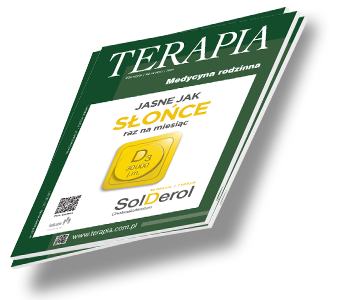W gabinecie lekarza rodzinnego Terapia 2023, 7 ( 426 ) : 6 - 12
Leczenie stanów zapalnych jamy ustnej i gardła w codziennej praktyce lekarskiej
Treatment of inflammation of the mouth and throat in daily medical practice
Dolegliwości wywołane zapaleniem jamy ustnej i gardła to jedne z najczęściej zgłaszanych objawów przez pacjentów podstawowej opieki zdrowotnej. Szacuje się, iż stanowią one nawet do 2% wszystkich wizyt lekarskich (1). Zazwyczaj, ze względu na samoograniczający, często nagły charakter, są leczone przez pacjentów samodzielnie, z wykorzystaniem różnorakich sposobów i preparatów medycznych. Objawy zapalenia jamy ustnej różnią się w zależności od przyczyny, która je spowodowała, choć niejednokrotnie ustalenie etiologii dolegliwości bywa problematyczne. Cechą wspólną zazwyczaj jest jednak ból, obrzęk, zauważalna i wyczuwalna zmiana w jamie ustnej (taka jak np. zaczerwienienie, pęcherzyk, owrzodzenie, nadżerka itp.) oraz trudności z przełykaniem i gryzieniem lub żuciem pokarmu (2,3). Zmiany dotyczą pacjentów w każdym wieku, od wczesnego dzieciństwa do późnej starości.

Zaloguj się i przeczytaj bezpłatnie całą treść artykułu.
Nie masz jeszcze konta dostępowego?
Zarejestruj się bezpłatnie, a otrzymasz:
* dostęp do wszystkich doniesień oraz pełnych tekstów artykułów naukowych w naszej Czytelni,
* prawo do bezpłatnego otrzymywania newslettera "Aktualności TERAPIA" z przeglądem interesujących i przydatnych wiadomości ze świata medycyny oraz systemu ochrony zdrowia w Polsce i na świecie,
* możliwość komentowania bieżących wydarzeń oraz udziału w ciekawych quizach i konkursach.
Zapraszamy serdecznie, dołącz do naszej społeczności.



Dodaj komentarz